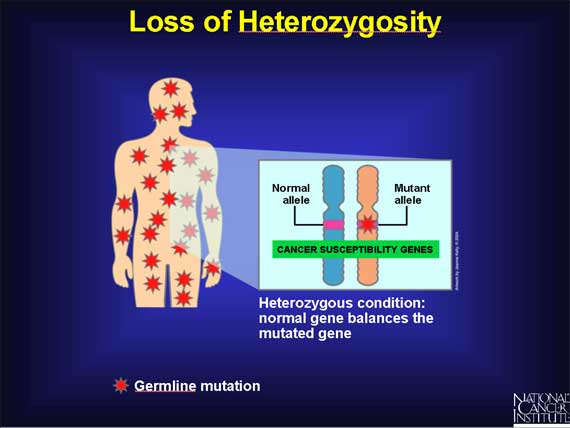|
In hereditary cancer syndromes, individuals are called heterozygous (having one or more dissimilar gene pairs) because they start life with a germline mutation in one of the alleles linked to cancer susceptibility, but it is balanced by a normal counterpart. These individuals are predisposed to cancer because all their cells have already sustained the first hit to cancer-linked genes. If the critically needed normal suppressor gene that balances this germline mutation is lost at some time during an individual's life, a condition called loss of heterozygosity (LOH) occurs.

< Previous | Index | Next Slide > |